Gold price waits for rates clues from Jackson Hole
Political turmoil in the US has the potential to 'help gold in the short and longer term'
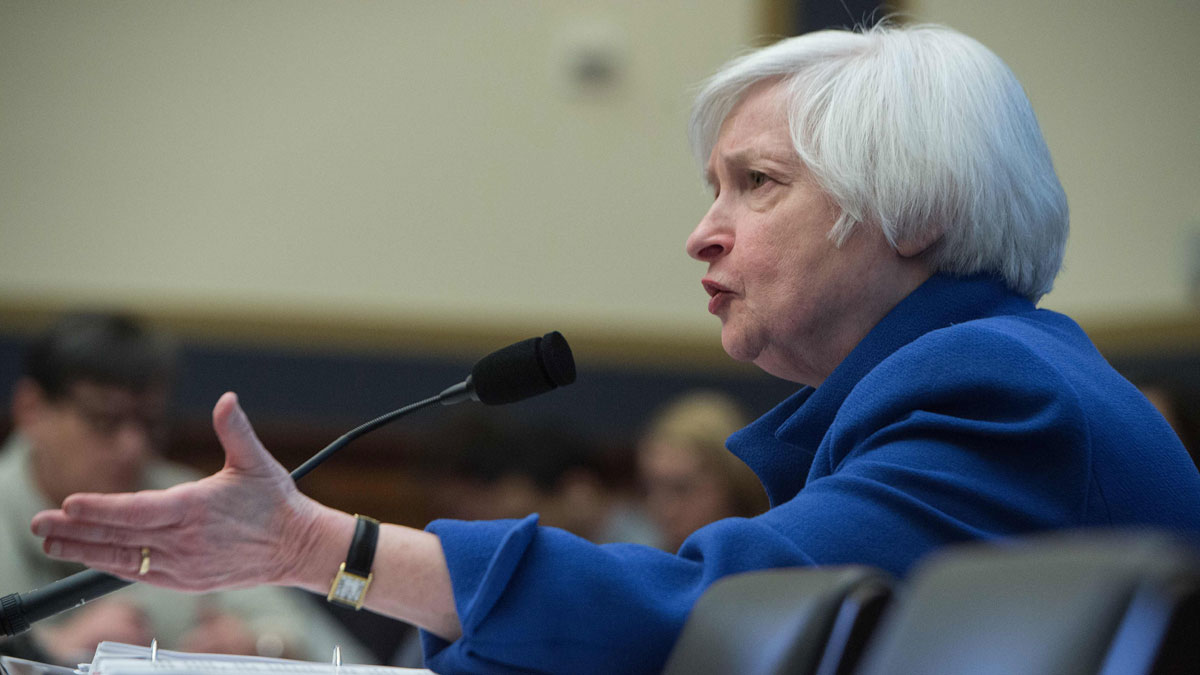
Gold price could 'play catch-up' to $1,300
20 July
The gold price could be set for a sustained rally as it "plays catch up" with a weaker dollar and a "capped rates environment", according to analysts at UBS.
Strategist Joni Teves told the Financial Times the bank has changed its "near-term target" for the metal to $1,300 an ounce.
The Week
Escape your echo chamber. Get the facts behind the news, plus analysis from multiple perspectives.

Sign up for The Week's Free Newsletters
From our morning news briefing to a weekly Good News Newsletter, get the best of The Week delivered directly to your inbox.
From our morning news briefing to a weekly Good News Newsletter, get the best of The Week delivered directly to your inbox.
Spot gold, the current price for bullion in the market, was $1,242 an ounce this afternoon, the highest it has been since the end of June.
It was buoyed by the latest set of monetary policy announcements by the European Central Bank (ECB), which outlined an ideal scenario for gold traders of a gradual shift towards policy "normalisation".
ECB president Mario Draghi said policymakers "were unanimous in choosing not to change their guidance for monetary policy and not to set a date for discussing changes to its stimulus programme", Reuters reports.
"However, he flagged further discussions later in the year," it adds.
A free daily email with the biggest news stories of the day – and the best features from TheWeek.com
Those autumn discussions were enough to spark a recovery for the euro, pushing the relative value of dollar down and continuing a bad run for the greenback.
But the statement also emphasised "a very substantial degree of accommodation" and reaffirmed "the commitment to quantitative easing", said Mitsubishi analyst Jonathan Butler.
Gold is negatively correlated both to the dollar, against which it is held as a hedge, and to tighter monetary policy, especially rising interest rates, which tend to increase the opportunity cost of holding non-yielding assets.
Gold price: 'No convincing reversal' despite dovish Yellen
13 July
Gold has failed to mount a "convincing" comeback and rose only "mildly" overnight, despite dovish comments from Federal Reserve chair Janet Yellen.
The yellow metal has been sliding in recent weeks as central banks around the world have hinted at tightening of monetary policy and higher interest rates - referred to as a "hawkish" stance.
Non-yielding assets like precious metals tend to respond negatively to rates rises, as their opportunity costs are higher relative to assets that provide an income stream.
The gold price was below $1,210 an ounce earlier this week and some analysts reckoned it might have been set to go below $1,200 for the first time since March.
But yesterday gold gained for the second consecutive day and hit $1,223 an ounce.
Part of the reason for this was comments by Yellen to a Congressional committee that interest rates would rise only "gradually" in the months and years ahead, after three rates rises in the past eight months.
Beyond that, said Yellen, "the longer-run neutral level of the federal funds rate is likely to remain below levels that prevailed in previous decades," reports Bullion Vault.
Adding to the shift in sentiment were comments from the Latvian central bank chief, who is a voting member of the European Central Bank rate-setting committee, that its quantitative easing programme could carry on for a further two years.
Hints that bond-buying may be reined in had sent eurozone bond yields spiralling lower of late.
Given all of that some analysts were surprised at the modest nature of gold's recovery - it had pared gains to $1,218 an ounce earlier today - and blamed rises for rival risk assets like equities.
"Gold prices have seen only a mild recovery following Yellen's testimony on Wednesday; there has not been any convincing reversal as such, only a mild pullback," Hareesh V, head of research at Geofin Comtrade, told Reuters.
Analysts predicted that while gold could recover to $1,230 in the near-term, it was likely to remain stuck in a range between $1,180 and $1,250 an ounce for the time being.
Gold price could fall below $1,200 an ounce
11 July
The gold price could fall below $1,200 an ounce in the coming days amid speculation of tighter monetary policy in the month ahead, according to one analyst.
Spot gold touched recovered modestly to around $1,210 earlier today after touching $1,207 an ounce, its lowest for four months, during trading on Monday.
Naeem Aslam, chief market analyst at Think Markets UK, told MarketWatch: "The hawkish tone by central banks around the globe and sturdy US [jobs] data released on Friday is going to provide enough catalyst for the gold traders to push the price below the mark of $1,200.
He added that he saw support for gold at $1,177 if prices did fall lower than that threshold.
That "hawkish tone" includes comments by the European Central Bank that it might begin to raise interest rates and reduce bond buying.
In addition, there is the decision by the US Federal Reserve to raise interest rates twice so far this year, with further tightening predicted after figures last Friday showed the economy added 220,000 jobs last month.
Fed chairwoman Janet Yellen is due to give a speech later today. MKS PAMP analyst Tim Brown told Reuters a "hawkish" address - which "it's probably going to be" - would "put a little more pressure on gold again".
However, some analysts expect gold to rebound slightly in the coming days, even if it is on a longer-term decline.
According to various studies of the current trend, traders could take it to a range between $1,225 and $1,231 an ounce, says Reuters' analyst Wang Tao.
Gold price rooted near four-month low after US jobs report
10 July
Gold fell to a four-month low at the end of last week and was languishing less than two dollars above that level this afternoon as the market continues to respond to a strong US jobs report.
In late Friday trading in New York, it hit a little above $1,207 an ounce, its lowest since 14 March. It was still below $1,209 this afternoon in London.
This followed the publication of the latest non-farms payroll report from the US Department of Labour, which said that 220,000 jobs were added in June, "smashing Wall Street expectations of a 178,000 gain", says the Financial Times.
Initially disappointing figures for May were also revised higher, adds the paper.
Despite weak wage growth, which is running at 2.5 per cent year-on-year, economists believe the employment market is doing enough to justify the US Federal Reserve raising interest rates in the autumn for the third time this year.
When rates rise, the opportunity cost of holding assets with fixed or no yield, such as bonds and gold, also increases. Traders tend to sell gold and buy instead into the likes of shares, which respond well to rates rises.
The only thing that has been helping gold of late is political uncertainty, as traders tend to view gold as a "safe haven" store of value. But tensions have eased somewhat more recently.
However, Reuters technical analyst Wang Tao said gold remains under pressure and could fall to $1,204 today.
Gold caught in market 'tug of war'
5 July
Gold is continuing to wane against a backdrop of rising rates speculation and rising bond yields, but was inching higher this morning in response to global political tensions.
The spot gold price was trading at $1,222 an ounce at the time of writing, up 0.4 per cent for the session but only after it hit an eight-week low of $1,217 earlier on.
It was at $1,225 two days ago on the back of its first monthly loss this year in June.
Gold's problems stem from the expectation of rising interest rates and tighter monetary policy, as well as the reality that this is already happening, albeit gradually, in the US.
James Steel, an analyst at HSBC, pointed to comments last week from US, Eurozone and UK policymakers on global "reflation", says Bullion Vault. [https://www.bullionvault.com/gold-news/gold-bullion-070520172]
This has been driving down demand and prices for bonds, which pushes up yields. Gold is inversely correlated to bond yields and also responds negatively to rising rates as it does not offer any income and so its opportunity cost increases.
The most recent declines for gold are seen to be in correlation with rising eurozone bond yields.
The reason gold has failed to move any further, however, is that some traders are keen on its "safe haven" appeal in the wake of simmering geopolitical tensions following this week's missile test by North Korea.
Gold is near its 200-day moving average and its next big move could be decisive, experts believe.
The precious metal is in a "tug of war between this reflation narrative [and] rising geopolitical tensions," says Kamal Sharma, a currency strategist at the US investment bank Merrill Lynch.
Gold price sees first monthly loss of 2017
03 July
Gold hit a seven-week low today after recovering its first monthly trading loss so far this year.
Trading was down 1.2 per cent to below $1,226 an ounce, its lowest level since 12 May.
The metal rose above its 200-day moving average price in early May, prompting it to go on a prolonged rally that saw it gain around $50 an ounce over three weeks, Reuters reports.
However, it has "declined steadily ever since", being hit more recently by a rise in bond yields at a time of rising interest rates.
The US Federal Reserve increased interest rates for the second time this year last month and are projected to increase them again at least once more before the end of 2017.
Rates rises decrease the relative value of fixed-income assets, which reduces demand, hits prices and ups yields.
Gold tends to be positively correlated with bond prices - and so negatively correlated with yields - because it offers no income and loses lustre when rates are rising.
Also hitting gold today has been a recovery for the dollar after a poor run, as concerns ease over global political issues, including the UK government's stability.
Trading is back near its 200-day moving average, which means analysts are closely watching whether prices find support and rebound or continue to slide, potentially presaging a more significant decline.
"The political front is likely to attract continued demand, but [that is] currently not strong enough to offset the impact of rising yields," Saxo Bank's Ole Hansen said.
-
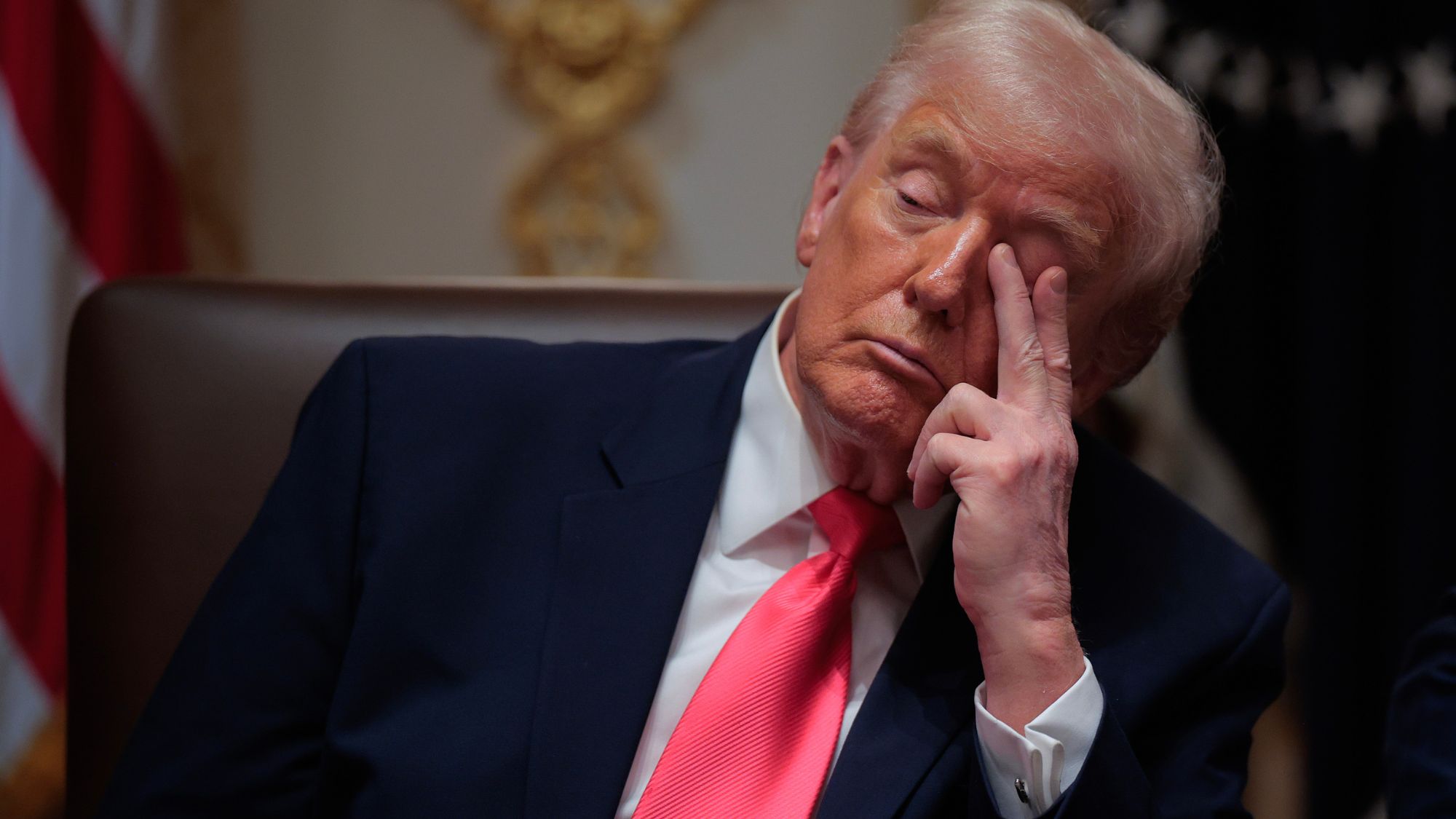 Trump’s poll collapse: can he stop the slide?
Trump’s poll collapse: can he stop the slide?Talking Point President who promised to ease cost-of-living has found that US economic woes can’t be solved ‘via executive fiat’
-
 Codeword: December 7, 2025
Codeword: December 7, 2025The daily codeword puzzle from The Week
-
 Sudoku hard: December 7, 2025
Sudoku hard: December 7, 2025The daily hard sudoku puzzle from The Week
-
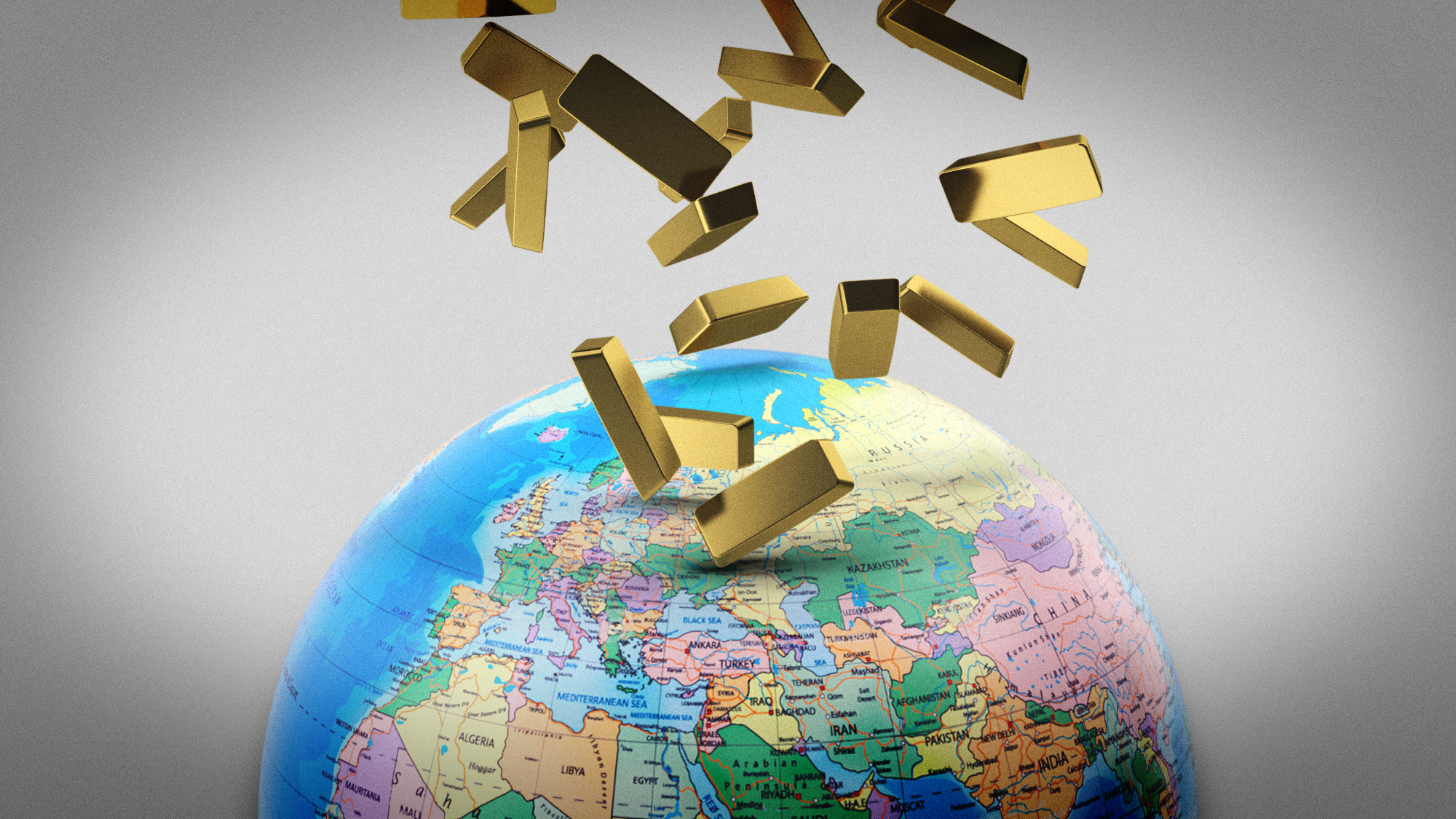 What a rising gold price says about the global economy
What a rising gold price says about the global economyThe Explainer Institutions, central banks and speculators drive record surge amid ‘loss of trust’ in bond markets and US dollar
-
 Gold tops $4K per ounce, signaling financial unease
Gold tops $4K per ounce, signaling financial uneaseSpeed Read Investors are worried about President Donald Trump’s trade war
-
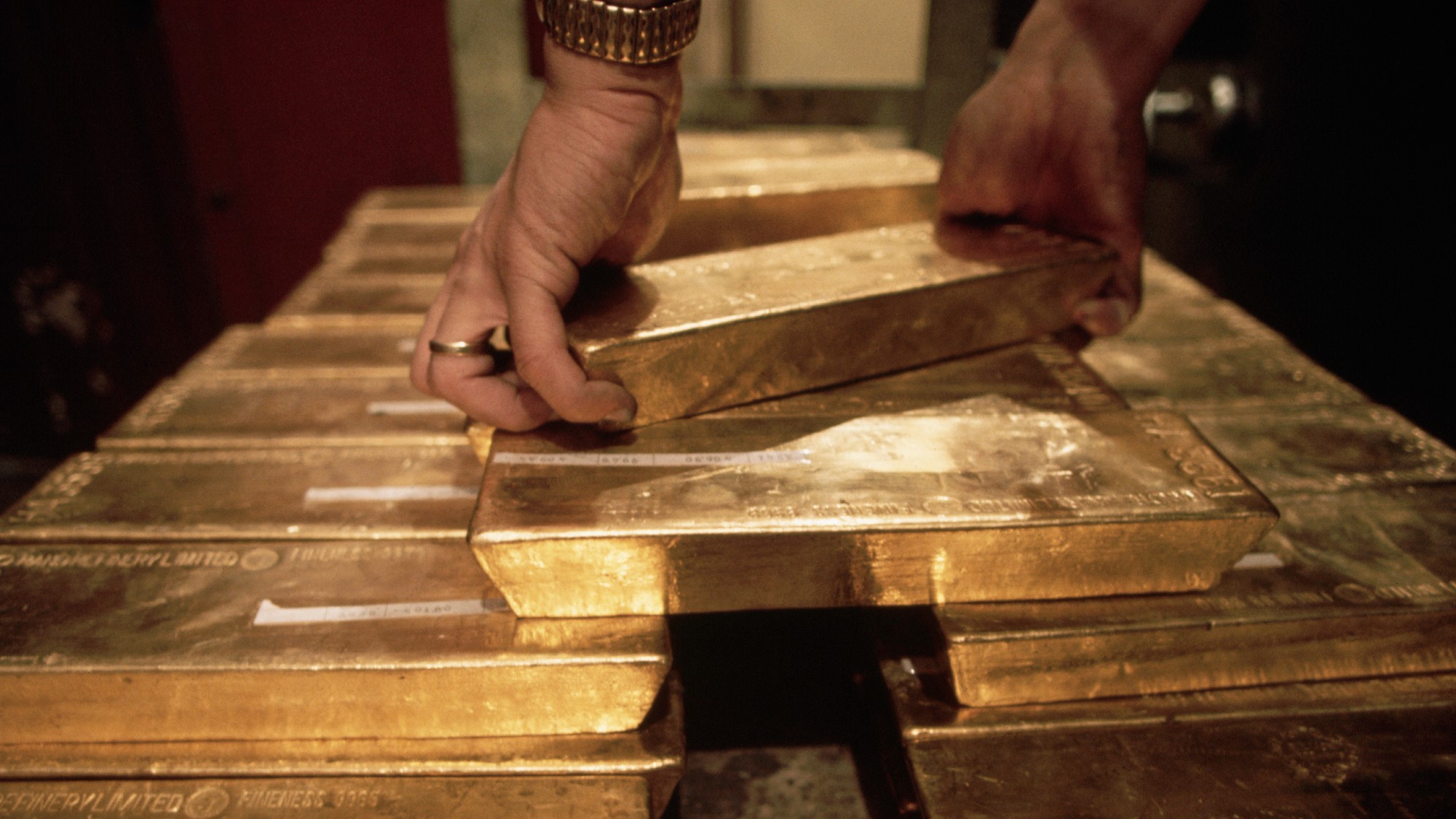 Safe harbor: Gold rises as stocks sink
Safe harbor: Gold rises as stocks sinkfeature It's a golden age for goldbugs
-
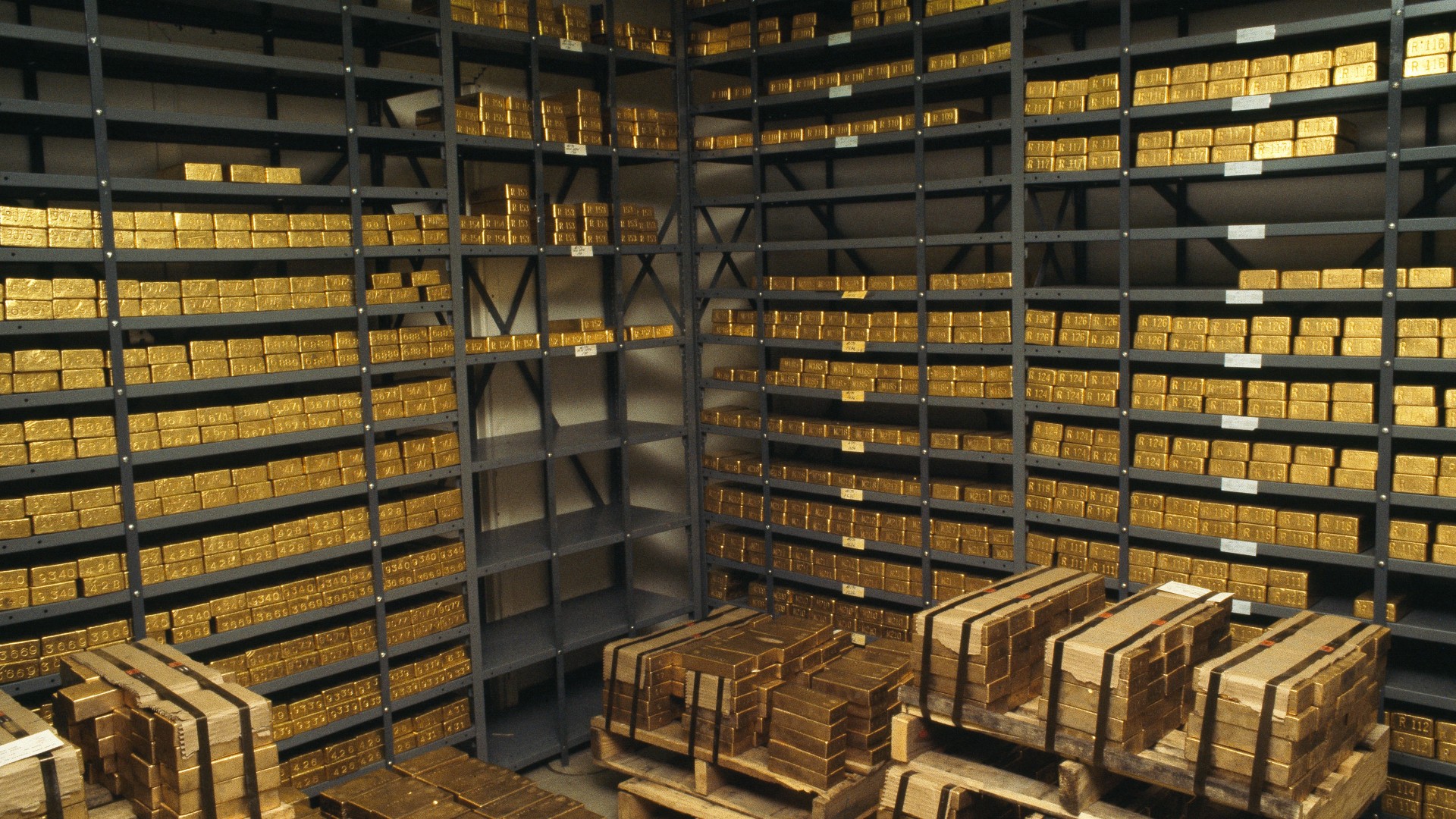 What rising gold prices can tell us about the economy in 2024
What rising gold prices can tell us about the economy in 2024The Explainer Market hits all-time high, boosted by a weakening US dollar and rising global tensions
-
 Gold’s ‘flash crash’: what the experts think
Gold’s ‘flash crash’: what the experts thinkfeature Bad news, good news and a loss of faith
-
 What is the price of gold and when is best to buy?
What is the price of gold and when is best to buy?Speed Read Economic and geopolitical uncertainty traditionally drives investors to reliable metal markets